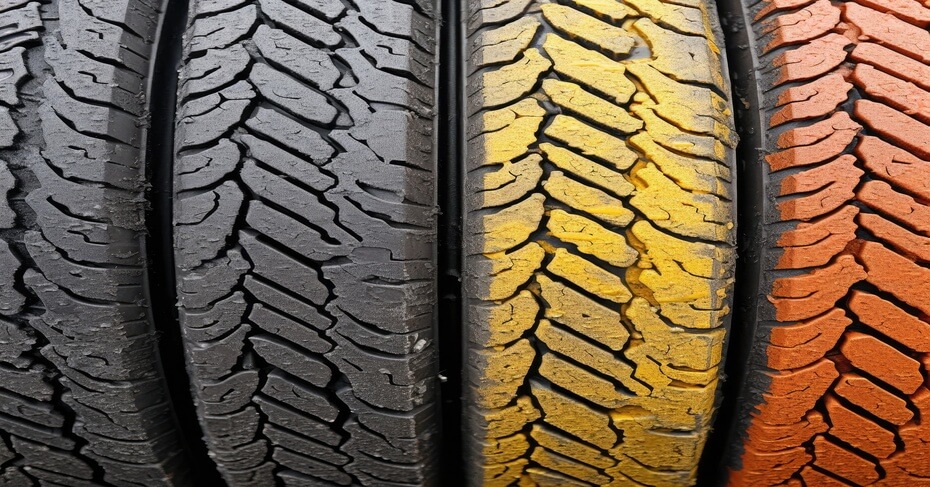
How to Tell When It’s Time to Replace Your Tires (Hint: It’s Not Just the Tread)

by Maddi Butler
It’s easy to assume your tires are fine as long as they haven’t gone bald — but the truth is, worn tread is only one of several signs it might be time to replace them. Tires play a critical role in your safety, handling, and fuel efficiency, and waiting too long can lead to dangerous situations or more expensive repairs down the road.
Not sure if your tires are still good? Here are the key signs to look for — some of which have nothing to do with tread depth at all.
Tread Isn’t Everything — But It Still Matters
Let’s start with the obvious. The tread on your tires helps maintain traction, especially in wet or slippery conditions. If it’s worn down, your stopping distance increases, and you’re more likely to hydroplane or lose control.
The “penny test” is still a quick way to check — insert a penny into your tread with Lincoln’s head facing down. If you can see the top of his head, it’s time to start shopping. But here’s the thing: even tires with tread can be unsafe under certain conditions.
Tires Have a Shelf Life
Even if you barely drive, tires age. The rubber compounds break down over time due to heat, sunlight, and general exposure — and that means tires can become brittle, cracked, or unsafe even if they “look fine.”
Most tire manufacturers recommend replacing tires every 6 to 10 years, regardless of tread depth. You can check the age of your tires by looking for the DOT code on the sidewall — the last four digits indicate the week and year the tire was made. If it says “2417,” that means it was made in the 24th week of 2017. Anything older than six years? Get them checked.
Bulges, Cracks, and Other Damage
Tires should have a smooth, rounded shape. If you see bubbles, bulges, or visible cracks in the rubber, those are signs of structural issues that could lead to a blowout. This kind of damage is usually caused by potholes, curbs, or just years of wear and tear.
Cracks in the sidewall — even small ones — mean the rubber is deteriorating. It’s not just cosmetic. Cracked tires are weaker and more likely to fail under pressure, especially in heat or at highway speeds.
Uneven Wear Could Point to Bigger Problems
If your tread is wearing down more on one side than the other — or if you see bald spots — that could be a sign of poor alignment, worn suspension parts, or underinflated tires. Not only does this reduce the lifespan of your tires, but it can also make your car harder to handle and less predictable in emergencies.
A simple tire rotation every 5,000 to 8,000 miles can help extend tire life, but if the wear is already uneven, it might be too late. It’s worth getting an alignment check, too — new tires won’t help much if the underlying issue isn’t fixed.
Pay Attention to How It Feels
Sometimes, your car will tell you what’s wrong. If your ride feels rougher than usual, or if your steering wheel shakes at certain speeds, that could be a sign your tires are worn, unbalanced, or damaged.
Don’t ignore vibration or noise — even if it seems minor. These signs often mean your tires aren’t making consistent contact with the road, which can reduce control and increase the risk of failure.
The Bottom Line
Tires don’t last forever — even if they look like they do. And while tread depth is important, age, visible damage, and how your car drives can all be signs that it’s time for a fresh set.
If you’re unsure, most tire shops will inspect them for free — it’s better to be safe than risk a blowout. And since tires can also affect your car’s safety and performance, it’s a good time to review your insurance, too. Making sure you’re covered properly (without overpaying) is just one more way to stay protected on the road.